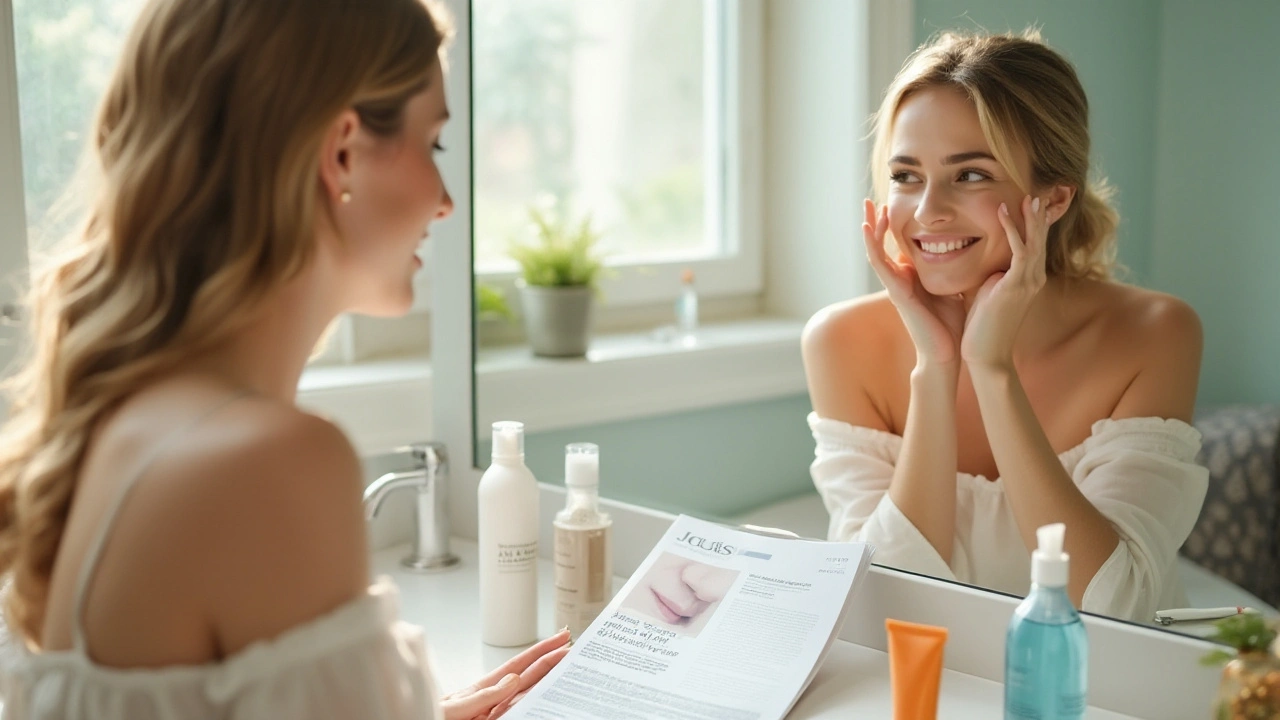Acne Treatment: What Actually Works and When to Get Help
About 85% of people get acne at some point. If you’re tired of quick fixes that don’t last, here’s a straightforward plan that helps most people—whether you have whiteheads, red bumps, or painful cysts.
Start with basics you can do today
Clean skin gently. Use a mild, non-foaming cleanser twice a day. Overwashing or scrubbing makes inflammation worse. Pick oil-free, non-comedogenic moisturizers and sunscreens.
Try effective OTC actives: benzoyl peroxide kills acne bacteria and reduces inflammation; use 2.5–5% at night or every other night to start. Salicylic acid (0.5–2%) helps unclog pores and is good for blackheads. If you need daily control, look for products with adapalene 0.1%—an OTC retinoid that speeds cell turnover and prevents new bumps.
Small, practical tip: introduce one new product at a time and give it 8–12 weeks to show results.
When topical care isn’t enough
If breakouts persist or you have widespread inflamed acne, a dermatologist may prescribe stronger options. Prescription topical retinoids (tretinoin, tazarotene) work faster than OTC versions but can irritate—start low and moisturize. Combining a topical retinoid with benzoyl peroxide or a topical antibiotic often gives better results, but don’t mix without guidance; some combinations increase irritation.
Oral antibiotics like doxycycline or minocycline reduce inflammation and bacterial load for moderate acne. Because of resistance concerns, doctors limit the length of antibiotic use and may switch to alternatives—our site covers safe substitutes and when to change therapy. For adult women, hormonal treatments (combined birth control pills or spironolactone) can cut acne driven by androgens.
Severe nodulocystic acne often needs isotretinoin. It’s the most powerful drug for long-term remission but requires close medical monitoring and pregnancy precautions. Don’t start isotretinoin without a specialist.
Procedures can speed recovery: cortisone injections for painful cysts, chemical peels for texture, and targeted light or laser therapy for stubborn lesions and redness. These are fast fixes for problem areas, but results vary.
Everyday habits matter. Don’t pick or squeeze—this increases scarring. Wash pillowcases and phone screens regularly. Consider a low-glycemic diet if you notice sugar or dairy worsen your skin. If scarring or persistent acne affects your confidence, ask a dermatologist about combined treatment plans.
See a doctor if you have deep, tender nodules, rapidly spreading acne, or acne that hasn’t improved after 3 months of consistent treatment. A tailored plan limits scarring and gets you results faster.
Effective Benefits of Benzoyl Peroxide in Combination Therapy
Discover the role of Benzoyl Peroxide in combination therapy for acne treatment. This informative guide delves into how Benzoyl Peroxide works with other medications, its benefits, and tips for effective use. Learn more about this powerful ingredient in your skincare regimen.
View More
